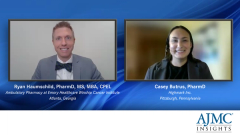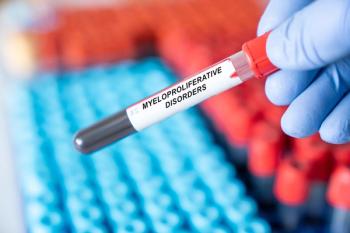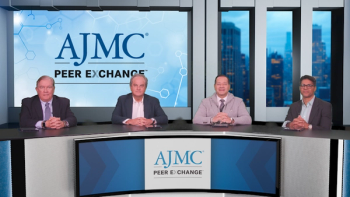
How the IRA is Reshaping Biosimilar Adoption
Panelists discuss how the Inflation Reduction Act (IRA) of 2022 has influenced biosimilar utilization in the US health care system through its pharmacy provisions targeting Medicare patients, examining institutional impacts on adoption patterns, exploring payer preferences between high- and low-wholesale acquisition cost (WAC) therapies under the new regulatory framework, forecasting the evolving role of biosimilars at health care institutions, and identifying persistent barriers to uptake alongside potential strategies to overcome these challenges.
Episodes in this series

Inflation Reduction Act and the Future of Biosimilars: A Physician's Guide
Impact of the Inflation Reduction Act (IRA) on Biosimilar Utilization
The IRA of 2022 included several pharmacy provisions specifically designed to promote biosimilar use among Medicare patients. Key impacts include the following:
- Creation of temporary reimbursement incentives for biosimilar products in Medicare Part B
- Establishment of a framework for Medicare drug price negotiation that may influence biologics pricing
- Introduction of inflation rebates that affect reference product pricing strategies
- Early evidence suggests modest increases in biosimilar adoption, though full effects are still emerging
Institutional Impact on Biosimilar Adoption
Health care institutions have experienced varied responses to IRA provisions, including the following:
- Accelerated formulary reviews for biosimilars in anticipation of Medicare changes
- Increased interest in biosimilar adoption from institutional leadership due to financial implications
- Enhanced collaboration between pharmacy departments and financial teams
- Development of more sophisticated tracking systems for reimbursement under new models
Payer Preferences: High- vs Low-WAC Therapies
With IRA changes now in effect:
- Payer preferences are shifting based on reimbursement structures.
- Low-WAC products may be preferred in some settings, particularly for Medicare Part D.
- High-WAC products with substantial rebates remain attractive in certain commercial contexts.
- The complex interplay between list price, rebates, and patient out-of-pocket costs continues to influence utilization.
Future Evolution of Biosimilars in Health Care Institutions
Biosimilars are poised to play an expanding role in health care institutions, including the following:
- Broader integration across therapeutic areas as more products enter the market
- Increased confidence in biosimilar use as clinical experience grows
- Development of standardized protocols for biosimilar implementation
- Greater emphasis on real-world evidence collection to support formulary decisions
Barriers to Uptake and Potential Solutions
Key barriers to biosimilar adoption include the following:
- Persistent knowledge gaps among some clinicians and patients
- Complex reimbursement systems that don't consistently reward biosimilar use
- Contractual arrangements that favor reference products
- Limited interchangeability designations
These barriers can be addressed through the following:
- Comprehensive education programs for health care providers and patients
- Alignment of financial incentives across the health care system
- Policy reforms that enhance price transparency and competition
- Simplified prior authorization processes for biosimilars
- Development of institutional champions to lead biosimilar initiatives
This evolving landscape requires physicians to stay informed about both clinical and policy developments related to biosimilars.
Newsletter
Stay ahead of policy, cost, and value—subscribe to AJMC for expert insights at the intersection of clinical care and health economics.

















































